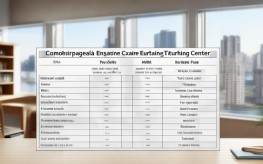英语议论文写作全攻略
一篇优秀的英语议论文通常遵循一个清晰的结构:引言 + 主体段 + 结论,下面我们详细拆解每个部分。

第一部分:核心结构模板
引言段 - "凤头" (引人入胜)
引言段的目标是吸引读者、明确立场、概述论点,通常包含以下三个要素:
- 背景/引子: 从一个宽泛的话题入手,用一两句话引出讨论的焦点。
- 争议/问题: 指出当前存在争议或需要讨论的问题。
- thesis statement (中心论点): 这是整个文章的灵魂! 用一句话清晰、明确地表达你的观点,通常包含你的立场和三个主要分论点(为主体段做准备)。
引言段常用句型:
-
背景引入:
[Topic] has become a highly debated issue in contemporary society.([话题]已成为当代社会一个备受争议的问题。)In the modern era, the question of whether [Topic] is beneficial or detrimental has sparked intense discussion.(在现代,[话题]是否有益的争论引发了激烈的讨论。)With the rapid development of technology/society, the issue of [Topic] has come to the forefront of public attention.(随着科技/社会的飞速发展,[话题]问题已走到公众关注的舞台中央。)
-
提出争议:
People hold conflicting views on this matter.(人们对这件事持有不同的看法。)The debate over [Topic] is multifaceted, with proponents and opponents presenting strong arguments.(话题]的争论是多方面的,支持者和反对者都提出了强有力的论据。)
-
中心论点:
- 经典三段式 Thesis:
While some argue that [观点A], I firmly believe that [你的立场]. This essay will argue that [分论点一], [分论点二], and [分论点三].(虽然有些人认为[观点A],但我坚信[你的立场],本文将论证[分论点一]、[分论点二]和[分论点三]。)
- 简洁版 Thesis:
This essay will argue that [你的立场] because of [原因一], [原因二], and [原因三].(本文将论证[你的立场],因为[原因一]、[原因二]和[原因三]。)
- 经典三段式 Thesis:
主体段 - "猪肚" (内容充实)
主体段是文章的核心,需要用2-3个段落来支撑你的中心论点,每个主体段都应该“一个中心,一个主题”。
主体段"五步法"结构:
- Topic Sentence (主题句): 段落的第一句话,清晰地陈述本段的分论点,这个分论点必须与你的中心论点相关。
- Explanation/Elaboration (解释/阐述): 用自己的话解释主题句的意思,让读者更清楚你要表达什么。
- Evidence (论据): 提供具体的证据来支持你的主题句,论据可以是:
- 事实:
According to a recent study by [机构]...(根据[机构]的最近一项研究……) - 数据:
Statistics show that...(数据显示……) - 专家观点:
As renowned psychologist [专家名] points out, ...(著名的心理学家[专家名]指出……) - 个人经历/例子:
For instance, I once witnessed...(我曾目睹……) - 历史事件/文学作品引用:
This is evident in the novel [书名], where the character...(这在小说[书名]中很明显,角色……)
- 事实:
- Analysis (分析): 这是最容易也最常被忽略的一步! 解释你的论据如何证明你的主题句,不要只罗列事实,要分析事实背后的逻辑。
- Concluding Sentence (小结句): 用一句话总结本段,并可以自然地过渡到下一段。
主体段常用句型:
-
主题句:
The primary reason for my stance is that...(我持此立场的主要原因是……)Another compelling argument in favor of [你的立场] is...(支持[你的立场]的另一个有力论据是……)Furthermore, [分论点] plays a crucial role in this discussion.([分论点]在这场讨论中扮演着重要角色。)
-
引入论据:
To illustrate this point, a case in point is...(为了说明这一点,一个恰当的例子是……)This is best demonstrated by the fact that...(这最好地证明了……)For example, ...(…)
-
分析连接:
This example clearly illustrates that...(这个例子清楚地说明了……)The data presented above strongly supports the claim that...(上述数据有力地支持了……的观点。)Therefore, it is reasonable to conclude that...(可以合理地得出结论……)
结论段 - "豹尾" (响亮有力)
结论段的目标是重申观点、总结论点、升华主题,而不是简单地重复引言。
结论段三要素:
- 重申中心论点: 用不同的措辞再次表达你的核心观点。
- 总结分论点: 简要回顾主体段提到的几个分论点,但不要引入新信息。
- 展望/建议: 提出一个更广阔的视角,给出建议,或强调该问题的重要性,让读者留下深刻印象。
结论段常用句型:
-
重申论点:
In conclusion, while the opposing view has some merit, the arguments in favor of [你的立场] are more convincing.(尽管反对观点有一定道理,但支持[你的立场]的论据更具说服力。)To sum up, it is evident that [你的立场] is the most viable option.(很明显[你的立场]是最可行的选择。)
-
总结论点:
This essay has demonstrated the importance of [分论点一], the effectiveness of [分论点二], and the necessity of [分论点三].(本文论证了[分论点一]的重要性、[分论点二]的有效性以及[分论点三]的必要性。)
-
升华/展望:
Looking ahead, it is imperative that we consider these factors in order to...(展望未来,我们必须考虑这些因素,以便……)Ultimately, the choice we make today regarding [话题] will shape the future of...(我们今天关于[话题]的选择将塑造……的未来。)Given the points discussed above, we can safely reach the conclusion that...(鉴于以上讨论,我们可以有把握地得出结论……)
第二部分:完整范文示例
Topic: Should students be required to wear school uniforms? (学生是否应该被要求穿校服?)
Introduction (引言段)
In the modern educational landscape, the debate over school uniforms is a persistent one. While some argue that mandatory uniforms stifle individuality and self-expression, I firmly believe that school uniforms should be required. This essay will argue that school uniforms promote a sense of equality, reduce peer pressure related to fashion, and enhance a focused learning environment.
Body Paragraph 1 (主体段一 - Equality)
The primary reason for my stance is that school uniforms promote a sense of equality among students. When all students wear the same clothes, visible economic disparities are minimized. A student's financial background, which is often reflected in their clothing, becomes less of a factor in social interactions. For instance, a student from a low-income family might feel ostracized if they cannot afford the latest branded clothing that their wealthier peers wear. By mandating uniforms, schools create a level playing field where students are judged by their character and academic abilities, not by their attire. This fosters a more inclusive and cohesive school community.
Body Paragraph 2 (主体段二 - Reducing Peer Pressure)
Furthermore, school uniforms significantly reduce peer pressure related to fashion and trends. In a non-uniform environment, students can become preoccupied with "keeping up with the latest styles," which can lead to anxiety, bullying, and a distraction from their studies. The constant need for new clothes to fit in can place a financial and emotional burden on both students and their parents. Uniforms eliminate this source of stress, allowing students to focus on what truly matters: their education and personal development. This is best demonstrated by the fact that many schools with uniform policies report a noticeable decrease in bullying incidents











